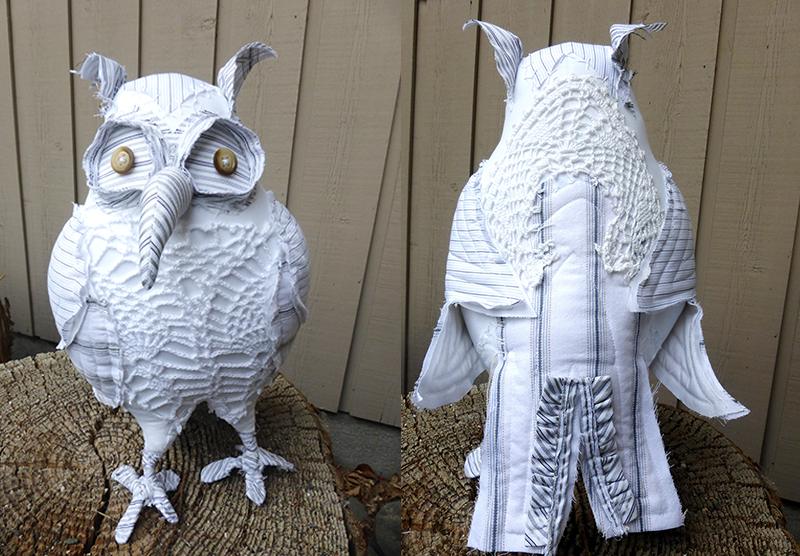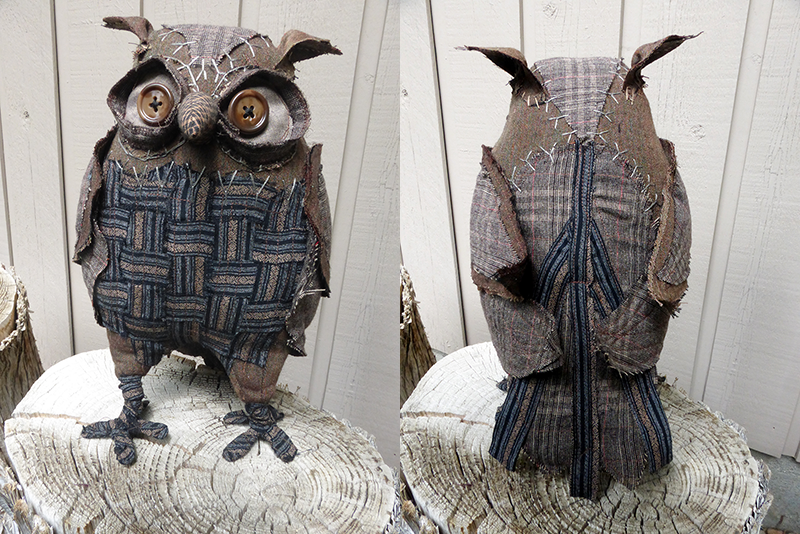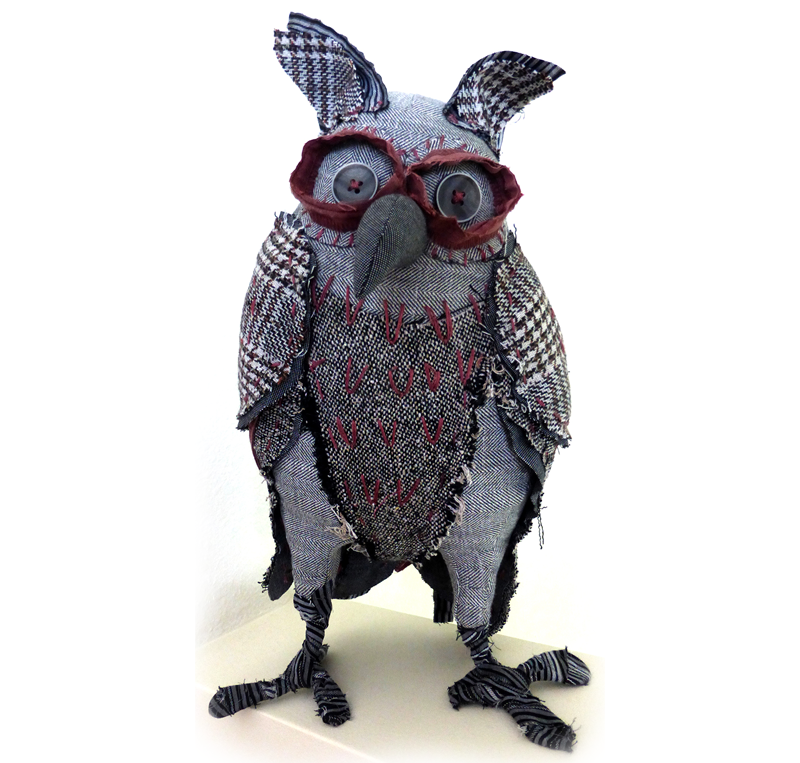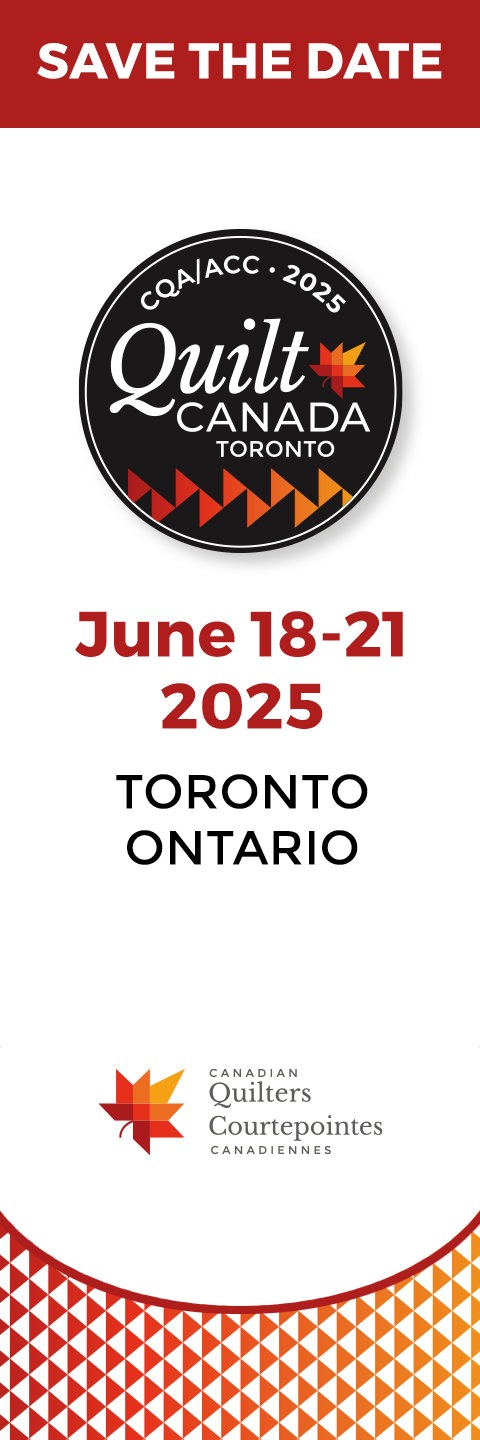Marianne Parsons creates 3D owls from materials sourced from local thrift stores.
For almost 50 years, I’ve shopped the local thrift shops, gleaning interesting textures and fibres that spoke to me. Curtains, men’s suits, saris … nothing is off the table. Clerks often comment on how nice my choice is. When I mention that it is going to be cut up, some are interested in what the end product will be, but others are aghast. One clerk almost refused to sell me a tiered ruffled skirt when ‘cutting’ appeared in the conversation.
The garments used to be washed and deconstructed immediately, until I realized that I actually wanted those serged seam allowances, buckram interfacings, and button plackets to add to my artwork. And because these are repurposed items, when I run out of fabric elements, I need to come up with creative solutions, as I can’t run to the fabric store for more. A shirt only has two sleeve plackets after all.
I have trouble with symmetry and square corners in my fibre artwork and am usually inclined to go out of the box (and off the wall). Many of my wall art pieces have design elements that extend past the borders or edges that are completely irregular.
Padded and stitched fabrics can be manipulated with darts, pleats, folds, and slits to create bubbles and protrusions. All of these are considered flaws in a bed quilt, but become assets in 3D sculptural artwork. Going vertical with these techniques is one option that appeals to me.
Birds are one of the sculptural possibilities that recently came to mind. After exploring a variety of construction options from books and the internet, I designed my own basic pattern for an owl, and started to play.

Hazel, front and back. Marianne’s owls are 10-12 inches in height, and about 8 inches in diameter.
At top: Humphrey
The goal wasn’t to recreate a living owl, but a symbol or an attitude of an owl, using scraps of fabric, wire, and stuffing.
This was an opportunity to repurpose those blouse ruffles and sleeve plackets into tails, and hand crocheted doilies into chest feathers. Stripes in shirt fabrics could denote wing contours and frayed raw edges could add feather texture. Serged seam allowances could denote eye sockets and buttons could become eyes. My garbage can was empty and feeling neglected.
So far, I’ve found that woven fabrics, e.g. men’s suits and shirts, work well for my style of birds. Knits stretch too much to be stuffed successfully, but burnt edges of polyester are twinkling in my mind, so perhaps I’ll be exploring that possibility soon.

Barney, front and back.
Of course, every bird needs a name. For gallery shows, every piece needs a title, so I have to decide if a bird feels more feminine or masculine. Somehow, I can come up with more male names than female ones. Sometimes, it’s easier to let a purchaser choose the name, making it that much more personal for them.
There’s no scarcity of ideas to pursue. Thinking up titles or new fibre ideas is just another constructive way to spend my ‘awake in the night time’ so I can be ready to tackle projects when dawn arrives.
TIP FOR STUFFING Bulky 3D shapes are an opportunity to use up those narrow strips of batting trimmed from quilt edges. Cut them into 1” chunks with an old pair of scissors and keep them on hand to stuff the interior of larger spaces like bird bellies. It’s easy to chop these up after each project, ready for use.
Marianne Parsons is a member of Fibre Art Network, Canadian Quilters Association, Fabricators, and Double O Quilters Guild.


